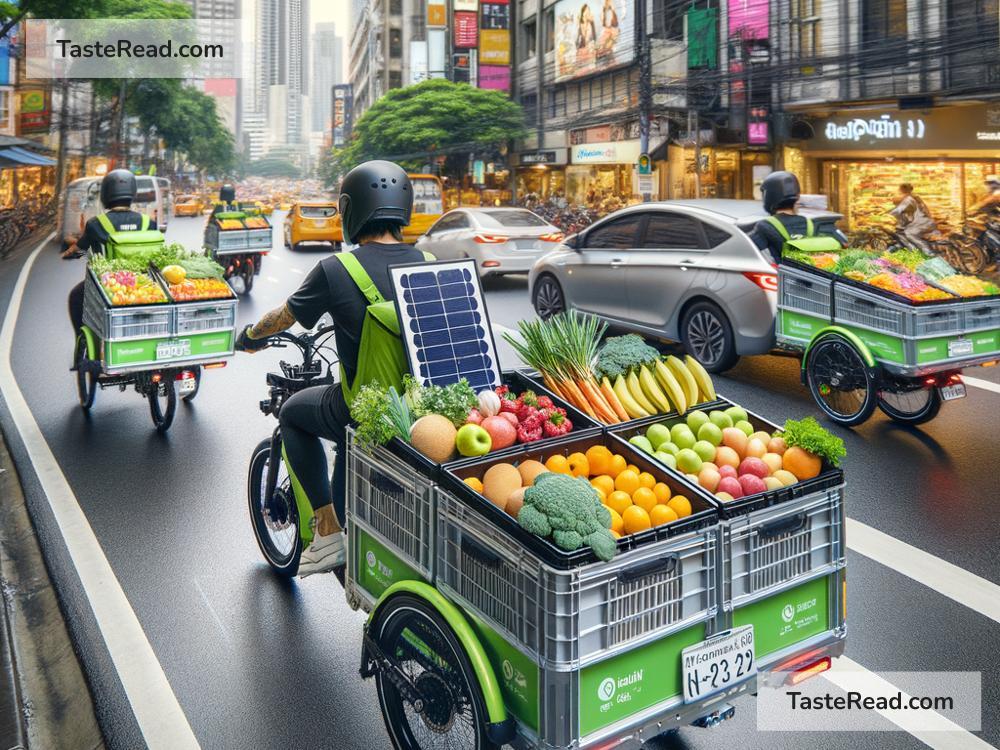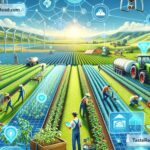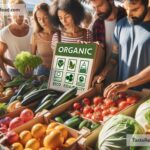The Future of Eco-Friendly Food Transportation
It’s no secret that the way we transport food around the world has a major impact on our environment. From trucks to ships and planes, the fuel needed to move food from farms to grocery stores creates pollution and contributes to climate change. But as we face an urgent need to reduce carbon emissions, innovations in eco-friendly food transportation are paving the way for a greener future. In this blog, we’ll explore what the future of food transportation might look like – and how these changes could benefit both the planet and our health.
Why We Need Eco-Friendly Food Transportation
Transporting food requires a massive global infrastructure. Trucks crisscross continents carrying fruits, vegetables, dairy, and meat. Planes bring exotic produce like tropical fruits to countries where they don’t grow naturally. Ships carry grains and seafood between continents. While all of this logistics makes our modern diets possible, it has a big downside: fossil fuel use. The transportation industry produces large amounts of greenhouse gases, which are a major contributor to global warming.
This system is unsustainable. If we don’t make changes, the planet could face even more extreme weather patterns, rising sea levels, and long-term damage to ecosystems. Luckily, governments, researchers, companies, and farmers are working together to create eco-friendly solutions for food transportation.
Green Technologies for Food Transport
The future of food transportation is full of creative solutions aimed at reducing pollution. Here are some of the technologies that will likely play a role:
1. Electric and Hybrid Vehicles
The rapid development of electric trucks and vans is an exciting step forward. These vehicles run on electric batteries, which produce far less pollution than traditional diesel engines. Companies like Tesla and Volvo are already rolling out electric trucks designed specifically for food delivery, and these vehicles are expected to become more common in the coming years. Additionally, hybrid vehicles – which combine traditional fuel engines with electric batteries – are another step toward reducing emissions in the transportation sector.
2. Biofuels
Biofuels, made from organic materials like plants or algae, are another promising alternative to fossil fuels. Some shipping companies are testing biofuel-powered ships, which could help reduce the carbon footprint of transporting food across oceans. Biofuels offer a cleaner energy source and are renewable, meaning they’re better for long-term use.
3. Solar-Powered Refrigeration
When food is transported, especially over long distances, it needs refrigeration to stay fresh. Refrigerated trucks often use extra fuel to power cooling systems, which can significantly add to overall emissions. Solar-powered refrigeration can change that. By using renewable energy from the sun, it’s possible to create cooling systems that don’t rely on fossil fuels.
4. Drones and Autonomous Vehicles
While the idea of drones delivering your groceries might sound futuristic, it’s already becoming a reality in some places. Drones are small and use less energy than trucks or planes, making them a greener option for short-distance food transportation. Similarly, autonomous vehicles (self-driving trucks) can optimize delivery routes, reducing fuel consumption and increasing efficiency.
Local Food Systems: The Key to Sustainability
As impressive as these technologies might be, another big change in the future of food transportation could come from shifting how we think about food itself. Instead of relying on food grown thousands of miles away, the future could focus more on local food systems.
Local food systems prioritize growing and distributing food within a smaller region. This reduces the need for long-distance transportation, cutting back on emissions significantly. Imagine eating strawberries grown just 20 miles from where you live, instead of ones shipped from half a world away. Local food also tends to be fresher, healthier, and more connected to the seasons.
Community-supported agriculture (CSA) programs, farmers’ markets, and urban farming initiatives are examples of local food systems that are already transforming food transportation in eco-friendly ways.
Collaboration for a Greener Future
Creating a sustainable food transportation system isn’t something that one person or one company can achieve alone. Governments will need to invest in clean energy infrastructure, and businesses will need to adopt greener practices. Consumers can play a role, too, by choosing locally sourced foods and supporting eco-friendly brands.
In recent years, we’ve seen major companies making ambitious pledges to reduce their environmental impacts. For example, grocery chains are investing in electric delivery fleets, while some shipping companies are experimenting with wind-powered cargo ships. These efforts show that change is possible – and that everyone has a part to play.
The Benefits of Eco-Friendly Food Transportation
The advantages of eco-friendly food transportation go far beyond just protecting the environment. Reducing pollution means cleaner air, which benefits public health. Transportation that relies on renewable energy can be more cost-efficient in the long run, saving money for both producers and consumers. And by investing in local food systems, communities can become more self-sufficient, strengthening local economies and creating closer connections between people and the food they eat.
Conclusion: A Greener Path Forward
The future of food transportation is bright – but it requires innovation, collaboration, and a commitment to sustainability. Technologies like electric vehicles, biofuels, and drones will likely play a big role in reducing emissions, while local food systems can help redefine how we think about food and where it comes from. By choosing eco-friendly options and supporting sustainable initiatives, we can all contribute to a greener, healthier planet.
Eco-friendly food transportation isn’t just a dream; it’s already becoming a reality. Together, we can move toward a future where the food on our plate supports both our well-being and the world we share.


